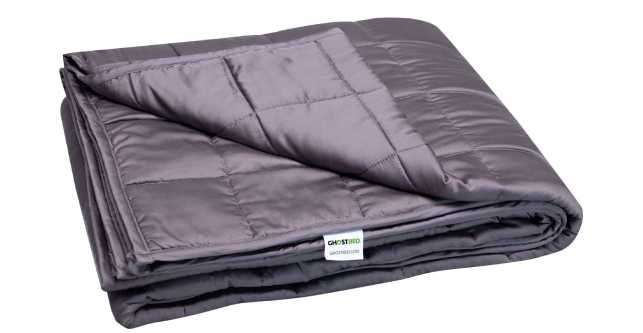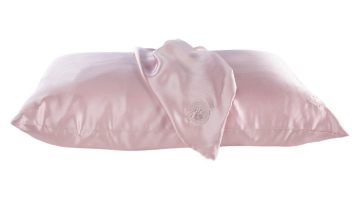How to Dry a Water-Damaged Mattress
Last Updated on February 15, 2025
by Marc Werner, Founder - GhostBed
Whether a natural disaster hit your home, a pet left a urine stain, or your child spilled one too many drinks on their bed, knowing how to properly dry a mattress is a critical step in preserving your bed for years to come.
In this article, we’ll explain how to dry a mattress, how to identify mold in your mattress and finally, when it’s time to throw in the towel and treat yourself to a new mattress.
Overview: How To Dry a Water-Damaged Mattress
If you’re dealing with a water-damaged mattress that isn’t too bad, drying it yourself is doable. The steps are simple:
- Sprinkle the mattress with baking soda to help absorb some moisture
- Vacuum the mattress with a wet/dry vacuum
- Make sure to let the mattress dry fully before using it again
For worse cases, you may need to hire a mattress restoration professional to help. And if your mattress is too far gone or if it is harboring dangerous mold and bacteria, it may be time to buy a new mattress altogether.

Evaluate the Damage to Your Mattress
The first step is to evaluate just how water-soaked your mattress is. If it has been submerged in water for some time, the damage could be severe enough that you need to get a professional to restore your mattress.
A completely soaked mattress presents a challenging job as you try to remove all the water and moisture completely. A water-damaged mattress that is not properly cleaned can also be a dangerous breeding ground for mold, mildew and bacteria. If a hurricane has hit your home, consider that floodwaters often contain toxins and sewage that your mattress and other upholstered furnishings can absorb.
After evaluating the damage to your mattress, it’s time to consider which method of drying your mattress is right for you. Depending on your assessment of the water damage, you can determine whether you can dry the mattress yourself or if it’s time to call in the professionals.
How to Dry a Mattress on Your Own
If the mattress has not been fully submerged in water, you can work to save the water-damaged bed yourself. Here are the steps to follow:
Step 1: Absorb Water From the Mattress
The first step is to absorb as much water as you can from your mattress using clean, dry towels. Dab the towels on the mattress to get out as much water as possible and replace wet towels with dry ones. Repeat as many times as needed.
Step 2: Remove Leftover Moisture
Once the towels have done their job of soaking up water from the surface of the mattress, you will next need to focus on removing the moisture sitting inside the mattress.
You can accomplish this by using a wet/dry shop vacuum built to suck up liquids. If you don’t own one, you can easily rent one from most home improvement stores.
Before using the vacuum, sprinkle baking soda onto the mattress to cover it completely. Work the baking soda into the inside of the mattress by scrubbing the area with a dry sponge. Baking soda works to not only absorb moisture but also to prevent mold from growing in your mattress. Let the baking soda sit for a few hours, then vacuum it up using the wet-dry vacuum.
For a very wet mattress, you can also use cat litter to soak up extra dampness. Just like the baking soda, sprinkle the kitty litter over the area. Use pressure to push the litter into the surface to help it absorb more moisture, and then vacuum the wet litter up.
Keep repeating these steps until you remove as much water from the mattress as you can.
Step 3: Prevent Mold on Your Mattress
Even if you immediately get to work with baking soda and/or kitty litter and a shop vac, mold may still find a place to grow. And once mold appears, all of your hard work will be for naught. Unfortunately, you’ll want to get rid of a mold-infested bed right away, for the safety of you and your family.
To prevent mold from growing, create a cleaning solution with one cup of rubbing alcohol and one cup of water. Next, grab a clean cloth to dip into the mixture. Wring the cloth out and begin wiping the entire surface of the bed to let the alcohol do its job in preventing mold. Let dry completely.
Step 4: Ensure Your Mattress is Completely Dry
Did you know that sunshine is a natural sanitizer and one of the best ways to make sure your mattress gets fully dried? If possible, place your mattress outside in the sun to dry and sanitize.
Stand the mattress up on its side, supported on small blocks and leaning against the wall. It’s important to allow air to circulate the mattress as much as possible. In situations where you are unable to dry the mattress in direct sunlight a dehumidifier and fans should do the trick. Do not use the mattress until it is completely dry, as this could contribute to mold growth.
The major takeaway: when drying a mattress yourself, take special care to disinfect and ensure that you remove all the moisture. After cleaning, watch for signs of growing mold, as well as nasty smells.
How to Dry a Mattress Using a Professional Cleaning Service
If your mattress has been soaking up water for an extended period or doesn’t respond to DIY solutions, your best option is to call in an expert to assess the damage.
Step 1: Contact a Professional Restoration Company
Certified professionals know exactly how to dry a mattress and have years of experience in water damage restoration. Your best bet is to contact a company that works under the Institute of Inspection Cleaning and Restoration Certification (IICRC) guidelines. These businesses have the proper equipment and education to assess your mattress fully and know the best way to advise you on how to dry your mattress safely.
Step 2: Mattress Evaluation
The IICRC-backed cleaning service will come to your home to inspect the damage. The technician will use special equipment to evaluate the damage to the mattress and will let you know if saving it is an option.
After you authorize the mattress restoration, the professional will also ask you to provide insurance information so that they can seek reimbursement for you, if possible, from your provider. If you live in an area with hurricanes or floods, you may want to re-read your flood insurance policy to see if your mattress is covered in the event of a natural disaster.
Step 3: The Clean-Up Process
A professional mattress cleaner will come to your home and set up dehumidifiers and other specialized equipment that will be used to restore your wet mattress. These machines infiltrate your mattress with professional cleaning solutions, which are then sucked out using a commercial vacuum. They may also use other strategies to restore your mattress, such as antimicrobial and disinfectant sprays.
As the restoration specialist works, they will document the job with notes and photos. If they find mold, they’ll alert you immediately and advise on next best steps.
Step 4: Enjoy Your Restored Mattress
Once the expert restores your mattress and confirms that it’s safe to use, they can help put your bed back in place.
Is That Mold On Your Mattress?
One of the most significant risks of having a wet mattress is that it can accumulate mold, which can be dangerous for you and your family. Not sure if what you see on your mattress is mold or not? Here are some tell-tale signs that mold has taken hold:
- First stage: Mold will begin inside, appearing as white fuzz.
- Second stage: Mold turns green as it spreads toward the surface.
- Third stage: Mold will be black once it appears on the surface.
If you see any mold, you should get rid of the mattress immediately as it is now a toxic environment. We understand that it can be frustrating to have to dispose of a mold-infested mattress, but ultimately, it’s the only option at this stage.
FAQs About Drying Your Mattress
Do you still have questions about drying a water-damaged mattress? In that case, please review some of the most frequently asked questions on this subject below. You may just find the answer you seek!
How do you dry a mattress quickly?
If your mattress has been saturated with water, rain, flooding, urine or any other liquid, you may not have the time or ability to get out and rent a wet/dry vacuum. In that case, we suggest first blotting up as much water as you can with clean towels. Remember to switch out your towels for new ones as soon as they become wet. Next, move on to using kitty litter and baking soda to further pull out any residual liquid. This should tide you over until you have time to take further action.
Is a mattress ruined if it gets wet?
The short answer is, not always. Even the best quality memory foam mattresses can be destroyed by water, but determining whether your mattress is ruined after applying our suggested mitigation strategies is pretty simple.
However, be on the lookout for the following:
- A musty, pungent smell
- Multi-colored stains
- New stains cropping up
If your mattress has any of the above, it's time to buy a new one
How long does it take a mattress to dry?
It may take your mattress anywhere between 24-48 hours to completely dry after it has been soaked with water, depending on the material it is made from and how saturated it is. Just remember, waiting for your mattress to dry completely is of the essence, so try to exercise patience.
When to Get a New Mattress
It can be tempting to want to restore a water-damaged mattress and sometimes it’s possible, but sometimes you have to understand when it’s just time to get a new mattress for your health and safety.
FEMA advises throwing away a contaminated bed after a natural disaster. In these situations, you must only consider keeping the mattress if you have a company specializing in water damage restoration that can clean it.
In addition, if there is mold or bacteria growth deep within your mattress, it’s time to replace it for a new one. As you shop for your new mattress, consider getting a waterproof mattress protector that protects your mattress from spills, sweat and other messes. These protectors can extend the life of your mattress, provide added comfort and help keep allergens at bay.
Marc has spent the last two decades designing & manufacturing mattresses and other sleep products, drawing on a lifetime of experience working with the material sciences. With several patents to his name, he works closely with the GhostBed team to create products with the perfect balance of comfort & support. Learn More




